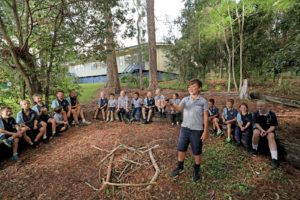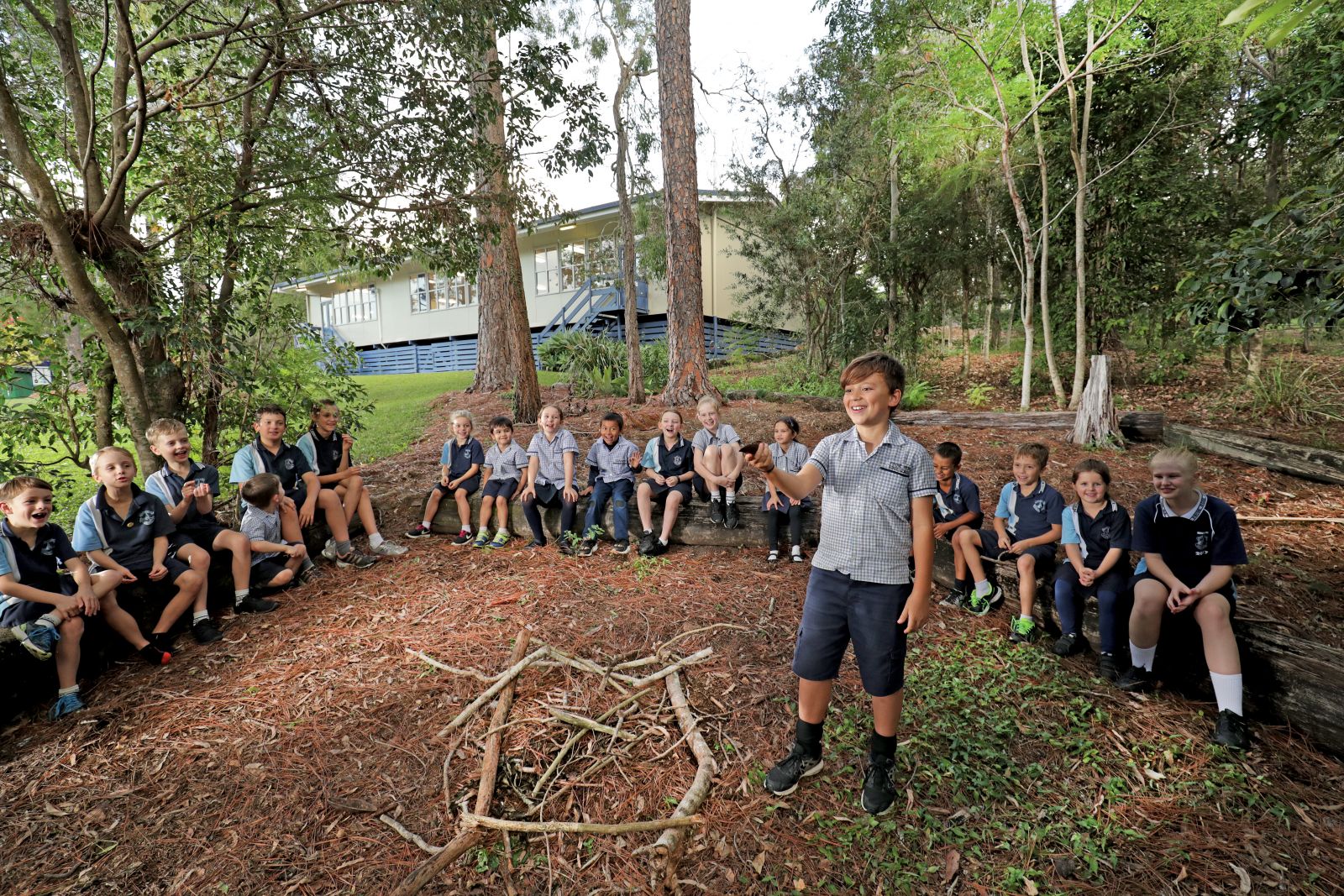
Earlier this month (July 2018), I was in Australia for the annual conference of the International Boys’ Schools Coalition (IBSC). I’ve mentioned this group to you before. This time, I went to a pre-conference adventure that involved going to a bush school. The school is in the Kangaroo Valley in New South Wales, Australia. This is a breathtaking part of Australia, very green and lush, and one of only seven true valleys in the world, or so we were told. The valley’s geographic location and topography means that it always has water, even in times of serious drought. It was where the local native Australians came for safety when the surrounding areas got dry and caught fire. We saw wombats and gray kangaroos (the smaller ones), as well as lyrebirds and cockatoos.
The purpose of this visit was to experience the unique experiential education offered in Australia called bush school. Students go to rural areas in the outback, known as “the bush,” to experience nature in tandem with their academic courses. Most of these programs involve several weeks to several months. The program we visited lasts for six months during a student’s 9th grade year, meaning that these students spend half of their 9th grade in an isolated place linking nature and the world around them with their academic studies. This is true experiential education.
This is how boys learn, by being hands-on. They experience the world and then think about what happened. They collect data and share those findings with each other, developing an understanding of the experience. At bush school, the boys work together on projects which link the academic program with the outdoor education opportunities.
The process involves five steps:
- Students are introduced to the activity
- They engage in the activity
- They discuss what happened
- They use the findings to lay the groundwork for future activities
- They are encouraged to find personal meaning in what they have learned
This process helps the boys develop critical thinking skills and resilience. The point is that they will learn to make decisions based on what they know or can find out and then if they fail, they have the opportunity to try it all over again using their mistakes to shape a new approach to the material. The point here is not to tell the boys what they are learning, but to give them the chance to develop an understanding for their experiences by themselves with the assistance of the teaching staff.
From all that we learned, this is a most personal kind of learning, and one that allows each student to develop the academic skills that they need. More importantly, for boys, this active engagement in the real world is highly motivating and they eagerly get involved with the activities in the program.
As if that were not enough, the school also has a small working farm that is closer to the main school campus. Here boys work with the farmers on learning basic animal husbandry and doing research on various ecosystems. This location is for older boys, but the experiential skills learned in the Kangaroo Valley lay the groundwork for this part of their education.
I have been recommending experiential education as the way to teach boys for my entire teaching career. In the Introductory Physical Science course that I taught, there was no book. The boys were given directions for exercises and experiments; they completed the activities, and then reported on their findings. This is exactly what the boys do in the Australian bush school, and the results are similar. The students are excited about what they are doing and are eagerly engaged in the activities. Failure is part of the learning process – they quickly grasp that point, discovering that it’s through mistakes that you really learn the material.
The point of experiential education is that students base their learning on information they gather based on interacting with the world. This means that what they learn is personal and they can easily remember what they are learning. When learning is based on what you are told or only on what you read, it can be hard to make the material come to life. It seems so remote and disconnected from your world.
OK, I hear you say, that’s all well and good for science and math, but what about language and history? Every experience needs to be written about, so the students get more experience in writing than they do in traditional school. Reading is required to learn about what you are experiencing, so the boys will have many opportunities to read about the activities and topics they’re tackling. As for history, this part of their schooling focuses on the history of the Aboriginal peoples who lived there before them through interacting with some of the local native people.
So pull your son away from the computer and let him dig up your back yard. Have him help you make pickles or jam from summer produce. If you have never made any of these things, ask a friend to help you start. Both of you take a bread-baking course at your local recreation center or work with a Master Gardener to start to grow herbs in pots. Knowing where your food comes from is a valuable lesson and having some of your plants die because you forgot to water them will help you learn what is really important in the world.
Do what you can to encourage your son’s school to include experiential education in its curriculum. I’ve seen what it does for the students at the school in Australia, and for the boys in my science classes. You will be amazed at the boys’ energy and enthusiasm for learning when they are encouraged to actively participate in their education experience.
